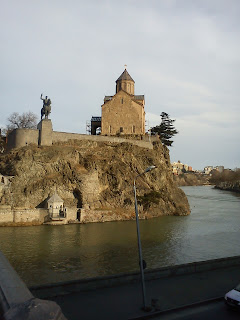Agritourism - Second Part
From Germany(https://sustainableexperience.blogspot.com/2020/09/agritourism-first-part.html )the phenomenon of agritourism was adopted in Italy. Here it developed into a model later to be taken as a reference.
The history of Italian rural life is negatively marked by growing urban industrialization. Between the 50s and 70s the repercussions of the latter are particularly felt: for the drainage of the workforce, and for pollution, for the progressive depopulation of ancient rural and mountain settlements. The urbanized peasants underwent a process of social alienation, and the cleavage between town and country became more acute.
The years of the oil shock contributed to a sense of insecurity and concern. Faced with a progress whose costs in terms of quality of life, sociality and security weighed so significantly, many people rediscovered the value of the countryside. As often happens in highly urban-centered societies as the Italian one, the rediscovery had the characteristics of romantic re-elaboration of an arcadia that had never matched with the rural historical reality. Regardless of the inherent risks of the mystifications of the farm-life idyll, the remarkable factor is the appeal exercised within a context of pervasive modernity by the traditions of the rural world.
In the 1970s, the first farmers of Trentino Alto-Adige, following the steps of what was happening in Germany and Austria, began to transform their farms into accommodation facilities. The first conference entitled "City and Countryside" was held in Florence in 1968. This is a fascinating title, considering the important debate and the fluctuations in the degrees of integration of the two realities, diachronically.
One of the aims of the conference was to protect the food and wine traditions of the rural world. Thus, from the very beginning, the coexistence of culinary and landscape aspects was the trademark of the development of the Italian agritourism system. And this was to be the source of its success.
With these assumptions Agriturist, flagship program of Confagricultura, was born; and it was followed by Terranostra, originating from Coldiretti, in 1972, and Alturist, later renamed Turismo Verde, by the Italian Farmers Confederation, in 1975.
Stemmed as a bottom-up process, in 1985 the phenomenon of agritourism was tabled in the Chambers where it was legislated. Law 730/1985 establishes that the cardinal principle of the agritourism system must be the connection, that is to say, agricultural and receptive activities remain interconnected. Agritorusisms are not just hotels surrounded by fields: By reception in a farmhouse we mean overnight stays, food, pedagogical and outdoor activities. The connection is thoughtfully distributed between agricultural and tourist activities with the former prevailing, and the latter being the handmaid of the former.
Consequently, the Italian farmhouses were described as working farms, which put their products on the table.
The law remained in force for two decades, until an attempt was made to review some aspects that had had a discriminatory and distorting impact on the market. In particular, the issue of food products to be offered to guests penalized the agritourisms unable for climatic and environmental reasons to differentiate their agricultural production. In monoculture areas it was practically impossible to offer tourists an appreciable and zero-kilometer diet. Furthermore, the aspect of touristic offer had had a limited space in the law of 1985. The new codification is law 96/2006 in which these aspects find space and are integrated with the growing desire to protect and promote the national food and wine culture. Agritourisms are required by this law to serve not only their own products, but regional products. Furthermore, the uses of DOC and DOP products, that is of controlled and protected origin, are recommended.
The network of agritourisms in Italy has expanded widely and it attracts foreigners, who account for about one third of the presences. Many farmhouses can boast attractive areas in their vicinity, thus managing to create a tourism offer of food, nature, art, relaxation and landscape in a single package. Tuscany has made school, and this has also had the negative impact of "Tuscanization" of the image of farmhouses. Some farmers have indeed preferred to re-brand themselves with a successful image, rather than risk proposing their own, a choice more coherent with local authenticity but with less guarantee of success.
It should be bore in mind that in tourism, uniqueness pays.
For More insights:
Jaime A. Seba (ed.), Ecotourism and sustainable tourism, Apple Academic Press, 2012;
Katia Laura Sidali, Achim Spiller and Birgit Schulze (Eds.), Food, Agri-Culture and Tourism, Spinger, 2011.


Commenti
Posta un commento